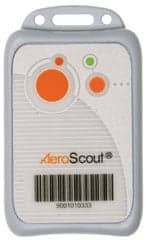To enhance supply chain visibility in the healthcare sector, GS1 US has unveiled a guideline for the adoption of radiofrequency identification technology. The guideline, aimed at pharmaceutical and medical device manufacturers, provides a roadmap for implementing RFID and leveraging GS1 Standards to streamline operations and ensure product safety.
Titled “Implementation Guideline for RFID in Healthcare Manufacturing: Using GS1 Standards to Enable Visibility and Efficiency,” the guideline focuses on the application of GS1 Standards in supporting the adoption of RFID technology. Specifically, it provides insights into encoding RAIN RFID tags using GS1’s Electronic Product Code (EPC) schemes outlined in the EPC Tag Data Standard (TDS). By adopting these standards, stakeholders across the healthcare supply chain can harness the power of automatic data capture and leverage RFID technology effectively, GS1 officials say.
“Automation enabled by RFID not only offers inventory visibility, but also supports critical supply chain processes including withdrawals, product safety holds, return logistics and more,” says Angela Fernandez, vice president of community engagement, GS1 US. “In these times of short supply of goods, knowing what is on hand and safe to use is a significant positive outcome for businesses, consumers and patients alike.”
As the healthcare industry continues to embrace digital solutions to address its unique challenges, the adoption of RFID technology holds significant promise, GS1 US officials say. With this new guideline in place, stakeholders in the healthcare sector can leverage the power of RFID to drive operational efficiency, enhance patient safety, and improve overall supply chain performance, they add.





